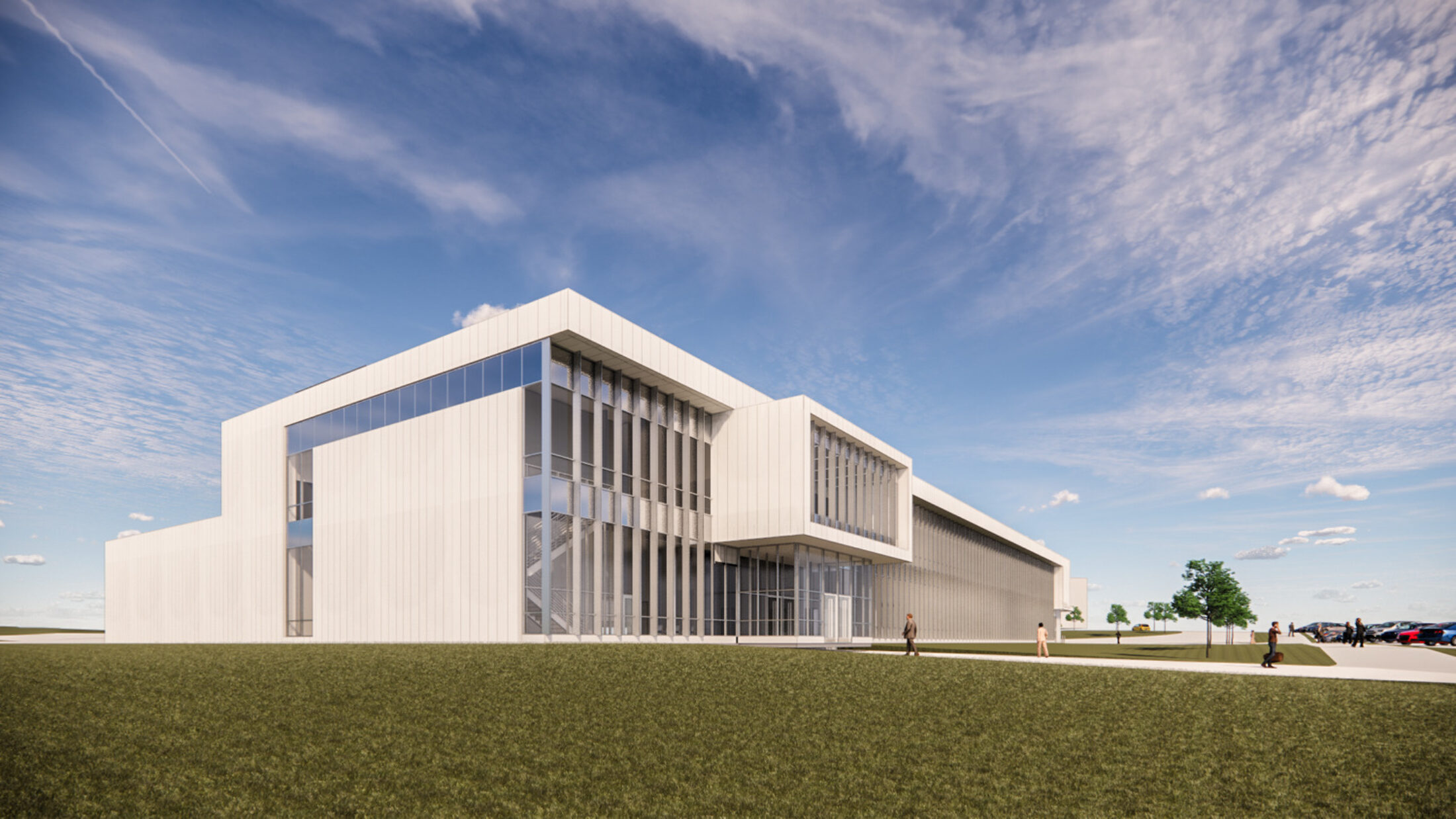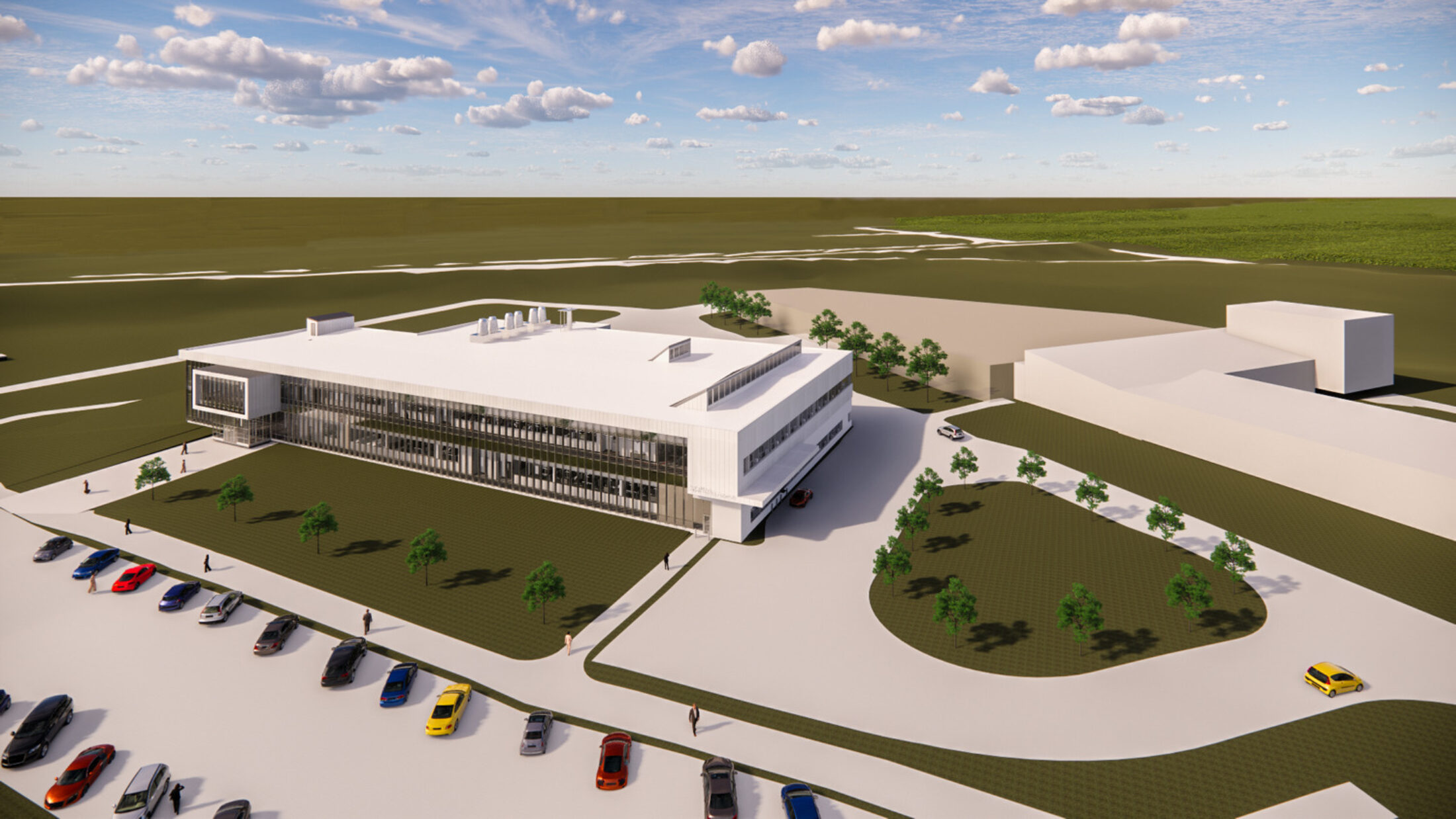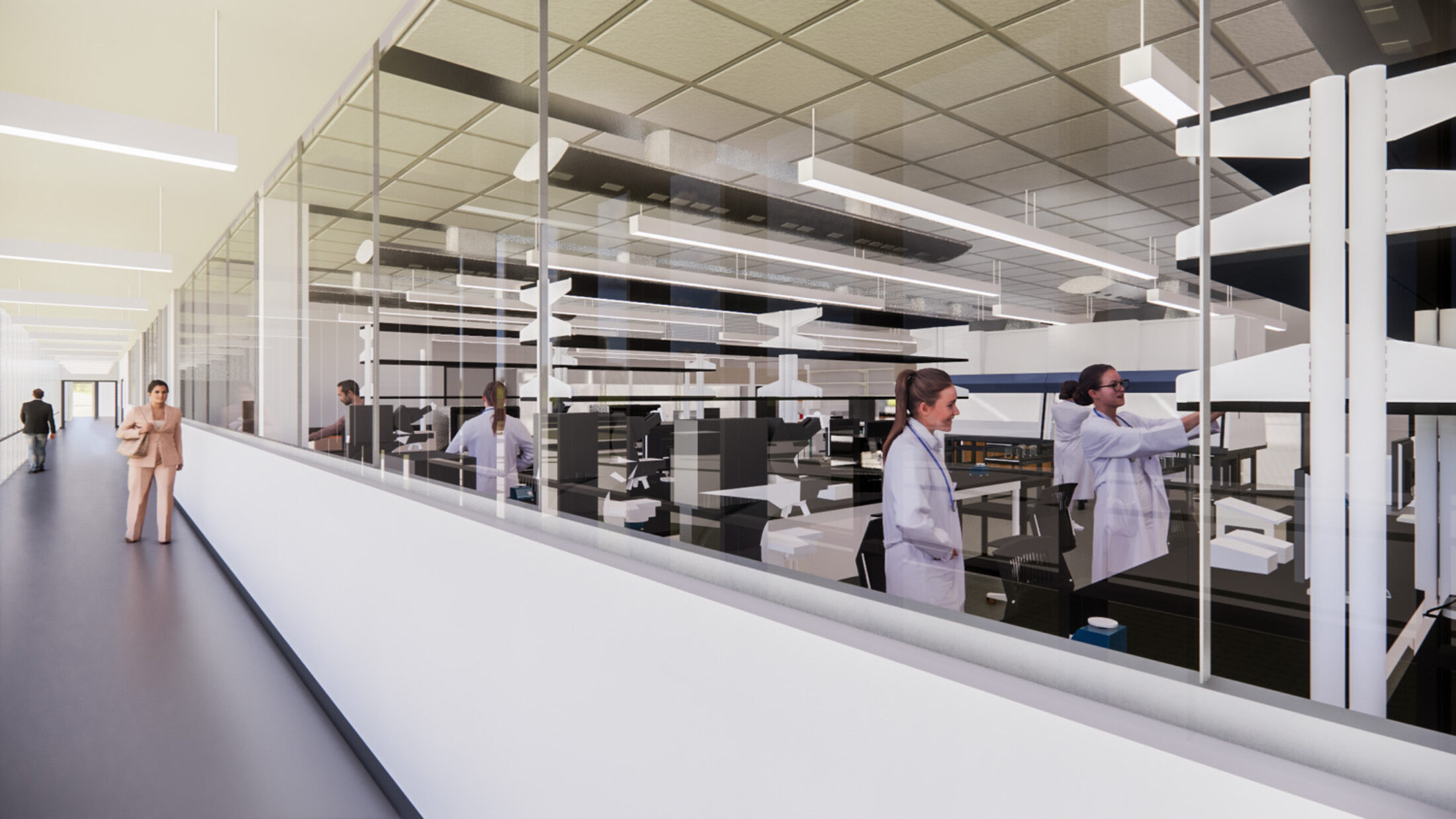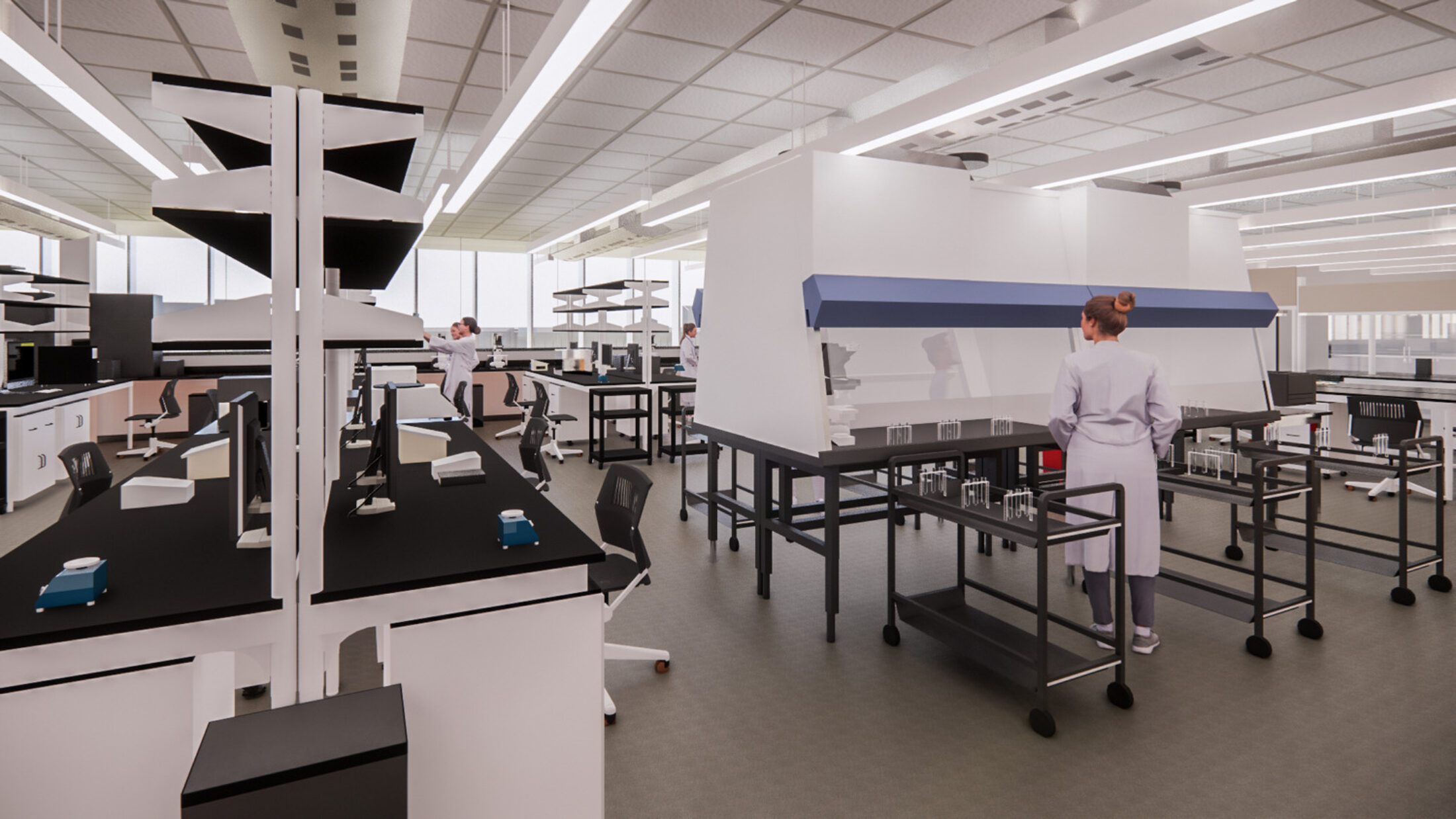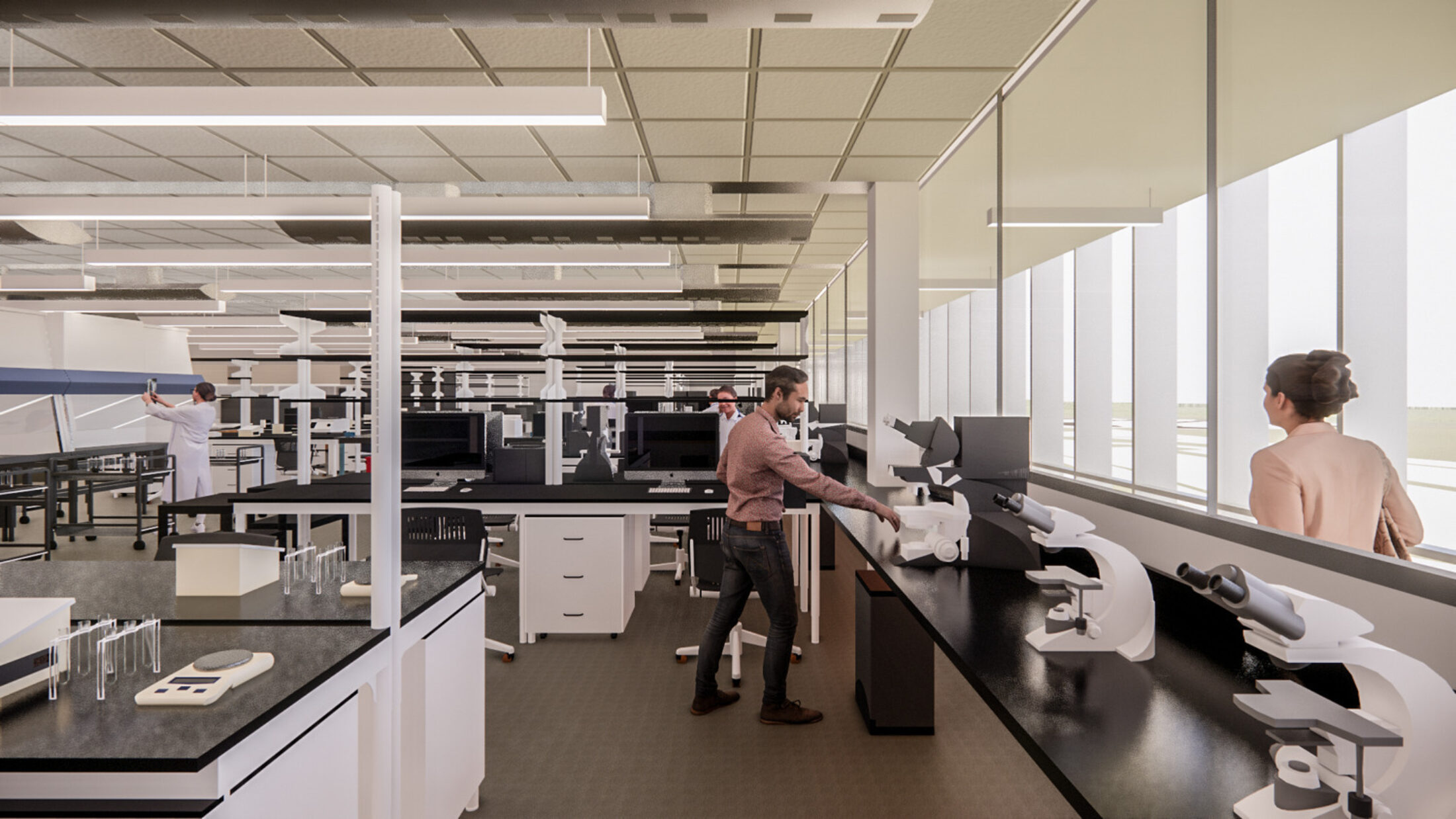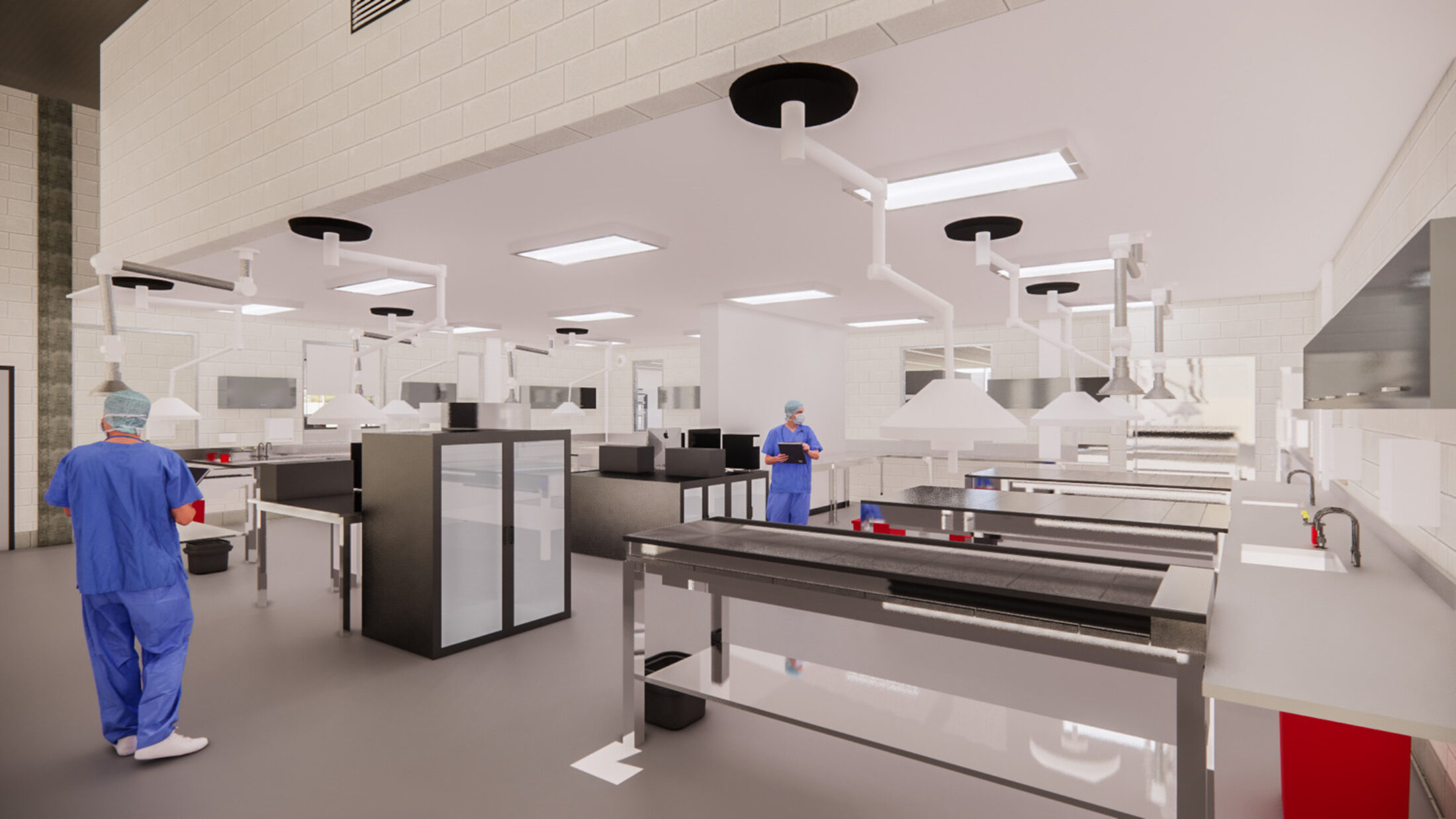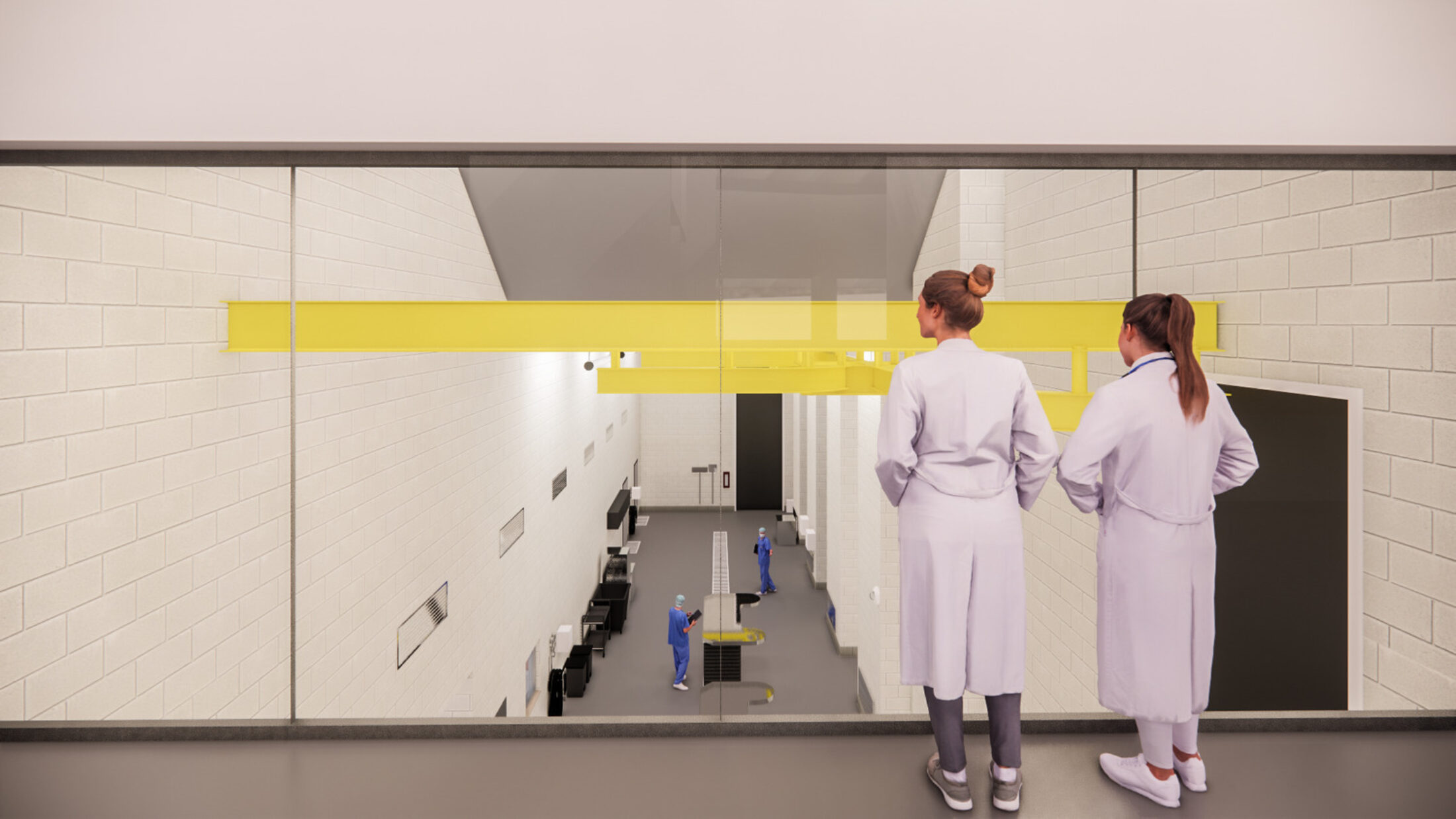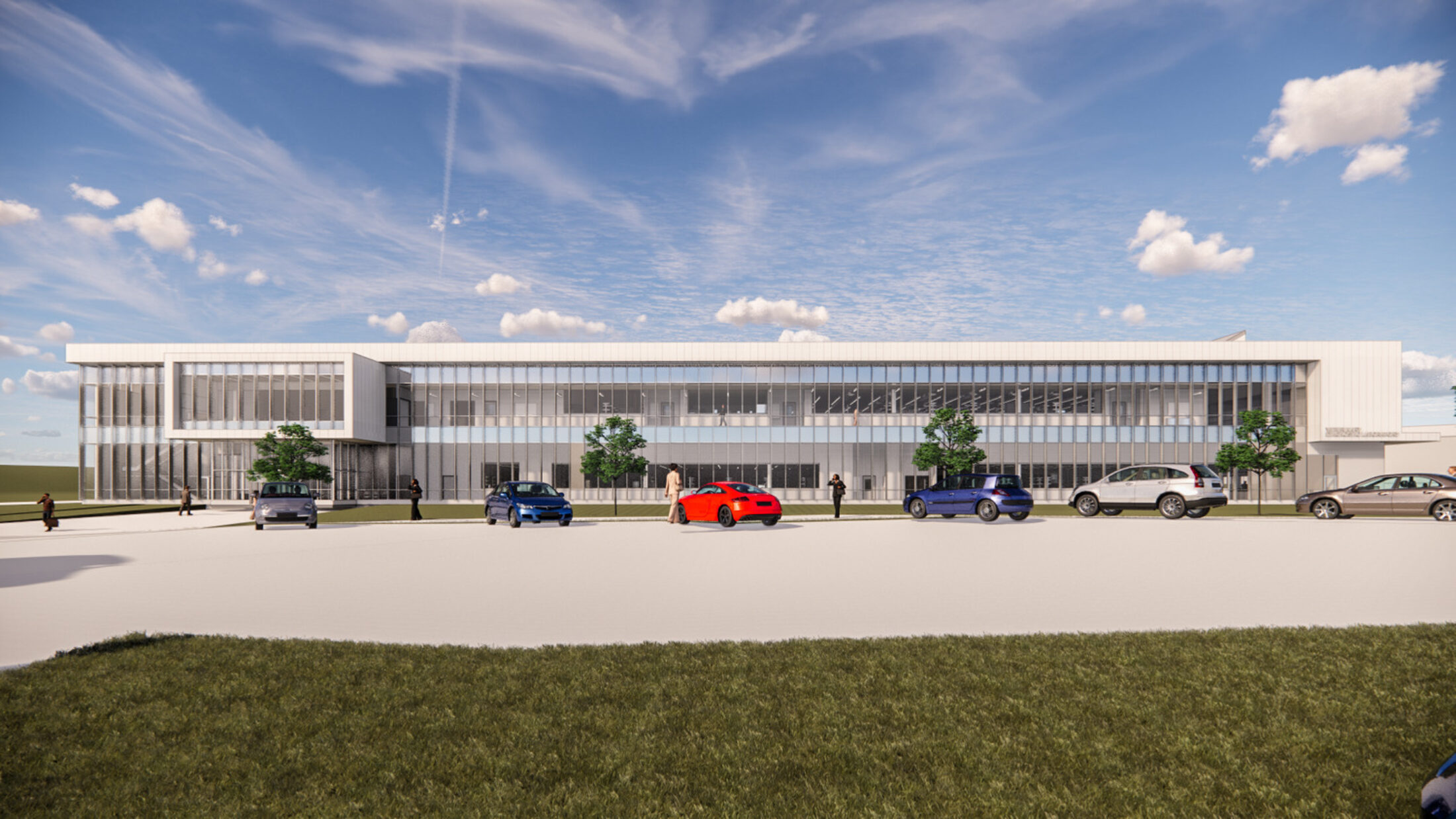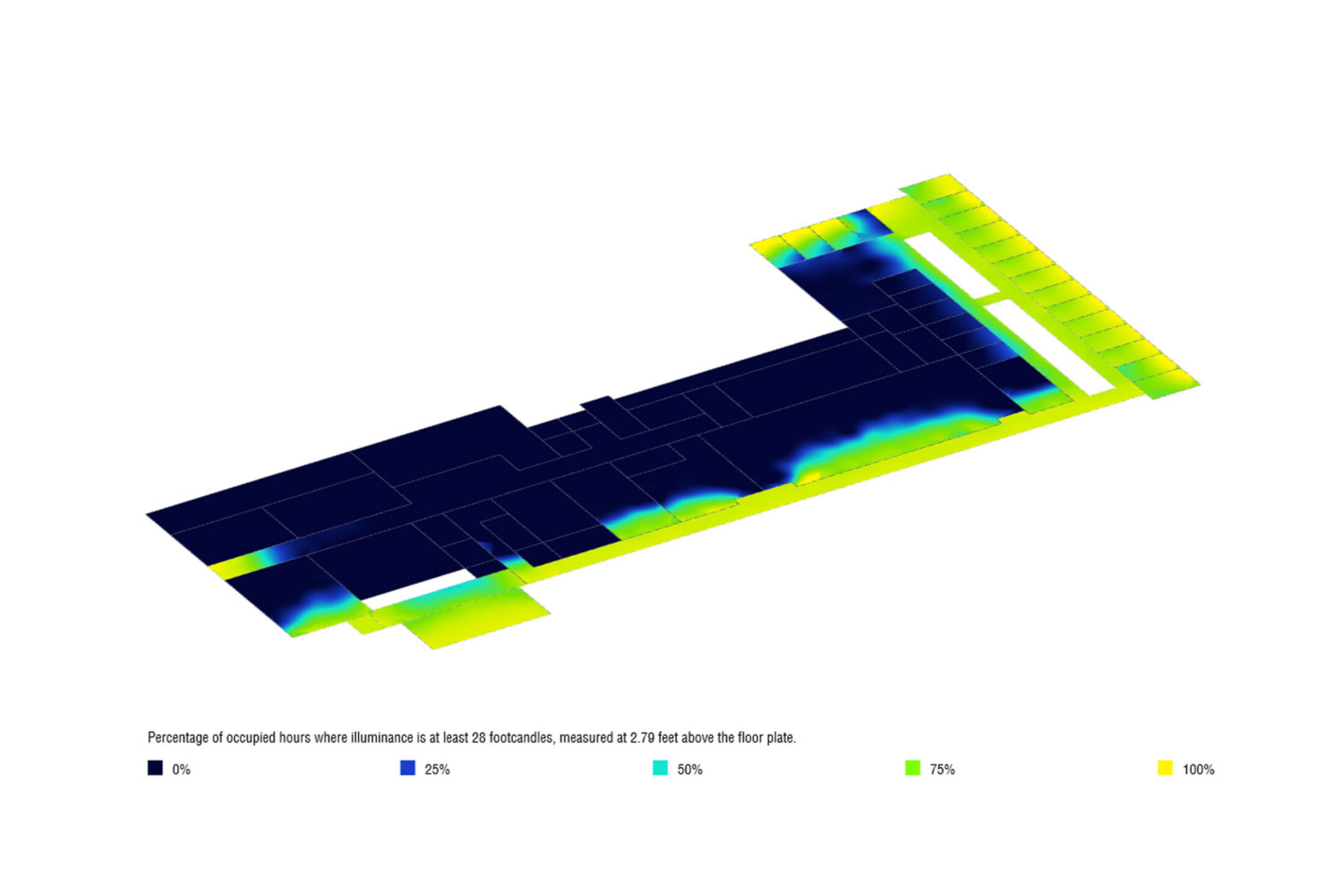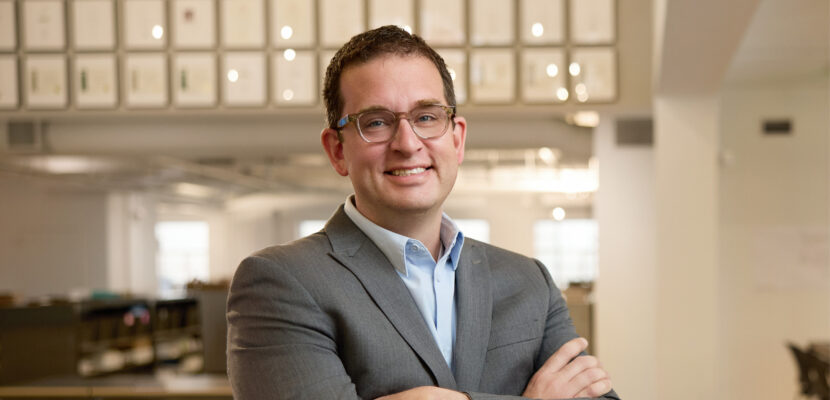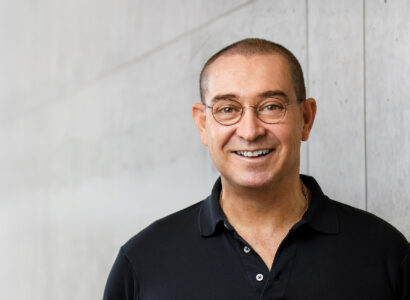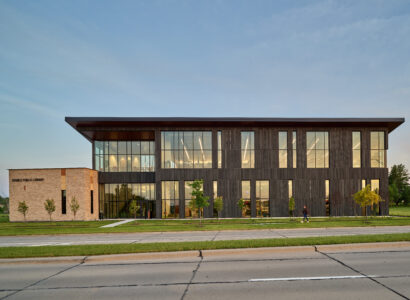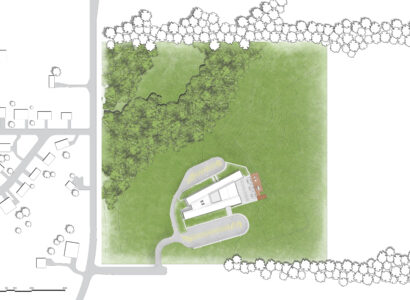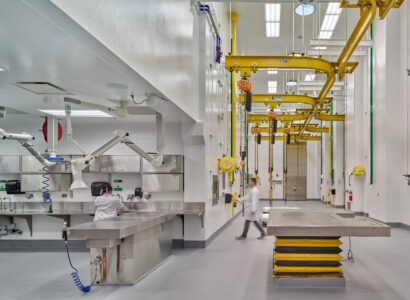Opened in 1976, the Iowa State University Veterinary Diagnostic Laboratory (VDL) has been housed within the College of Veterinary Medicine buildings. As their caseloads have grown – currently processing over 100,000 diagnostic cases per year and 1,500,000 diagnostic assays – VDL leadership identified they lacked the flexible laboratories, staff work areas, and collaborative office space needed to continue supporting their staff and operations.
In 2019, Iowa State University sought out a team to conceptualize a new facility for the VDL. They had clear goals of being state-of-the-art and on the leading edge of diagnostic services to the global agricultural industries. INVISION partnered with Perkins + Will, IMEG and Snyder and Associates to provide bridging document design services for the new stand-alone facility.
The importance of innovative laboratory design stands at the forefront of design. High-quality facilities, serving researchers’ functional and aesthetic needs, correlate with high-quality research. The design team’s value-forward design strategies sought to maintain and recruit talent, support innovation growth and accommodate change over time. Open-concept, flexible laboratories, collaborative office areas, enhanced logistical support space, biosafety and bio-security concerns and containment were drivers throughout the design.
